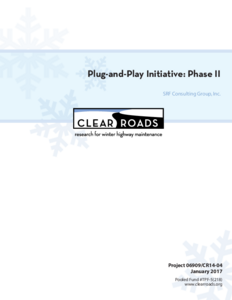Benefit-Cost of Various Winter Maintenance Strategies
Creator
Date Created
2015-09
Report Number
CR13-03
Description
Traffic Data Collection Improvements
Date Created
2014-02
Report Number
2014RIC51B
Description
Traffic Data Collection Processes Study
Date Created
2014-02
Report Number
2014RIC51A
Description
Intersection Safety Technologies Guidebook
Creator
Date Created
2016
Report Number
2016RIC10
Description
Commercial Weight Enforcement Innovation
Date Created
2015
Report Number
2015-17
Description
Portable Weigh-In-Motion System Evaluation
Date Created
2015
Report Number
2015-03
Description








